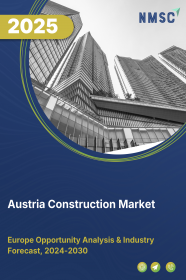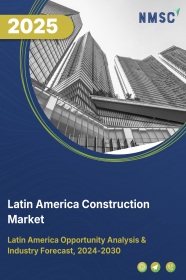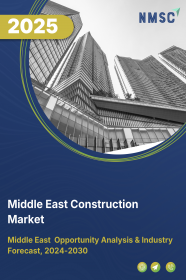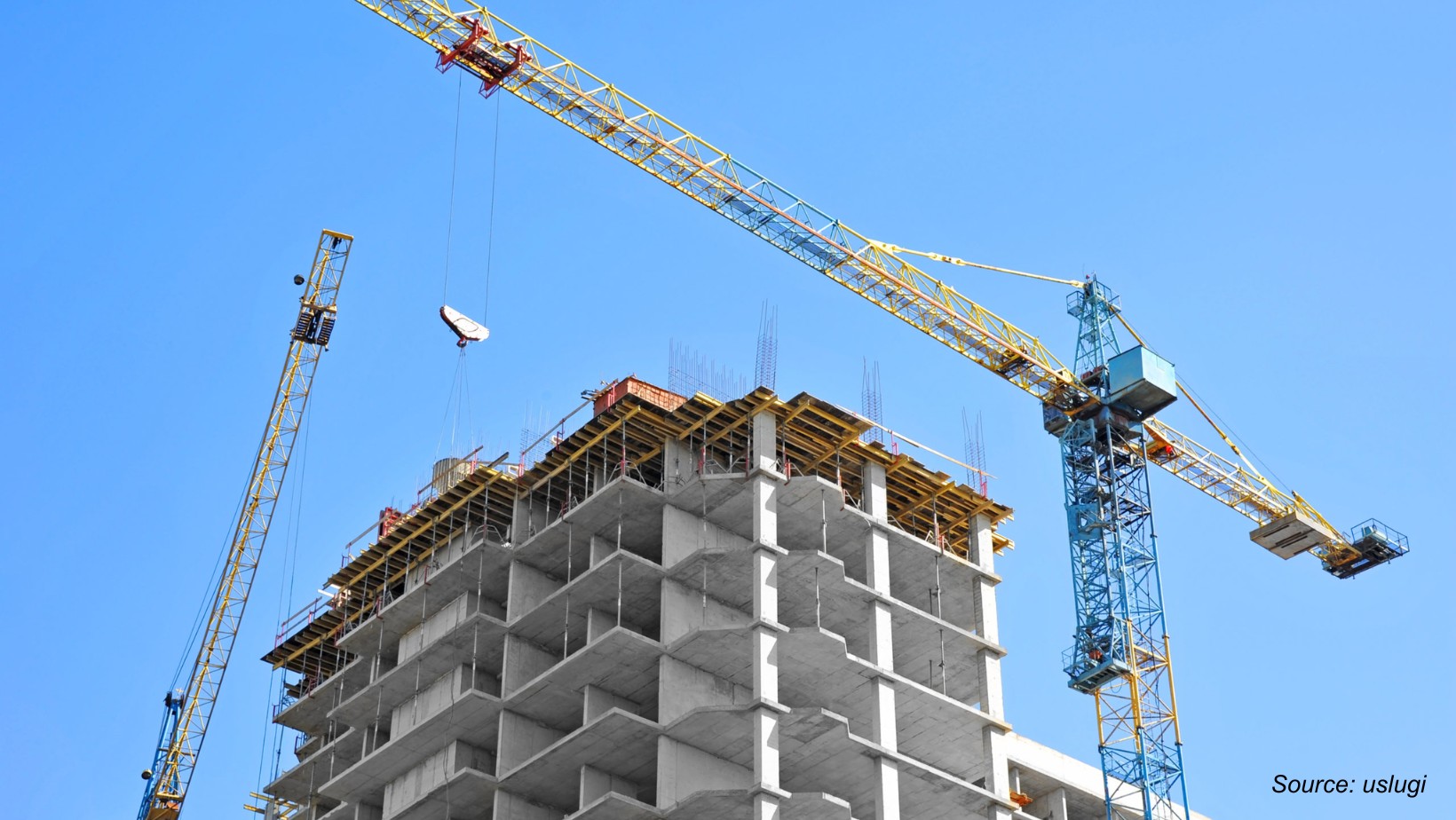
Austria Construction Market by Type (Renovation, and New Construction), by Construction Method (Traditional, Prefabricated/Modular, 3D-Printed, and Green/Sustainable), by Contractor Type (Large Contractor, Medium Contractor, and Small Contractor), and Sector (Real Estate, Commercial, Infrastructure, Industrial) – Industry Trends and Forecast, 2025–2030
Industry: Construction & Manufacturing | Publish Date: 05-Jun-2025 | No of Pages: 84 | No. of Tables: 117 | No. of Figures: 62 | Format: PDF | Report Code : CM2209
Austria Construction Industry Overview
The Austria Construction Market size was valued at USD 46.69 billion in 2024, and is predicted to reach USD 50.87 billion by the end of 2025. The industry is predicted to reach USD 67.52 billion by the end of 2030, at a CAGR of 5.8% from 2025 to 2030.
The Austria construction market is experiencing significant growth, largely driven by substantial government investment in infrastructure, particularly in renewable energy and transportation projects.
The Renewables Expansion Law (EAG) continues to play a pivotal role in supporting the country's transition to clean energy, with ongoing funding for solar, wind, and biomass projects. Additionally, major rail initiatives like the Semmering Base Tunnel and Koralm Railway are enhancing connectivity and aligning with Austria's climate goals.
Despite progress, the sector faces challenges from regulatory complexities and lengthy approval processes, which hinder timely project completion and increase costs.
However, the ongoing digital transformation, particularly through the adoption of Building Information Modeling (BIM) and emerging technologies like AI and IoT, is unlocking new growth opportunities by improving project precision, coordination, and efficiency in construction execution.
Government Funding Fuels the Austria Construction Market Demand
Austria's construction market continues to experience strong growth in 2024, driven by sustained government investment in infrastructure, particularly in renewable energy and power grid modernization.
As part of the Renewables Expansion Law, which continues to be actively implemented as of 2024, the Austrian government is intensifying efforts to accelerate the transition to clean energy. The law targets 100% renewable electricity production by 2030.
As of 2024, ongoing investment grants and subsidies for solar, wind, and biomass projects are projected to contribute investment over the decade.
Expanding Infrastructure Sector Propels the Market Growth
Austria construction market is experiencing robust growth in 2024, largely driven by increased government investment in infrastructure and renewable energy projects.
As part of the Renewables Expansion Law (EAG), which continues to be actively implemented as of 2024, continues to support the transition to clean energy through funding and subsidies for solar, wind, and biomass initiatives, reinforcing the country's goal of achieving 100% renewable electricity by 2030.
Simultaneously, Austria is making substantial progress in transportation infrastructure, with ongoing development of major rail projects such as the Semmering Base Tunnel, Koralm Railway, and Brenner Base Tunnel. These initiatives, aimed at enhancing connectivity and supporting climate objectives, are strengthening the overall construction sector despite recent economic challenges, reflecting the strategic importance of infrastructure in Austria's national development agenda.
Regulatory Challenges Hinder the Austria Construction Market Expansion
The construction industry continues to grapple with significant regulatory complexities that hinder project progress. Infrastructure developments face delays due to the intricate permitting processes required at municipal, provincial, and national levels. These processes encompass compliance with zoning laws, environmental assessments, building codes, and safety standards.
For instance, major rail infrastructure projects have experienced postponements attributed to extended planning and authorization procedures.
Additionally, the necessity for environmental impact assessments (EIAs) in certain developments further prolong timelines and escalate costs. Despite efforts to streamline procedures through digitalization, such as Vienna's fully digitalized building permit application platform, bureaucratic inefficiencies and regulatory disparities across jurisdictions continue to pose challenges. These factors not only extend project timelines but also contribute to increased costs and deter potential investments in Austria construction market.
Embracing Digitalization and Building Information Modeling (BIM) Unlocks New Growth Opportunities in the Austria Construction Market Trends
The increasing digital transformation in the construction industry, coupled with the widespread adoption of Building Information Modeling (BIM), is driving substantial market growth. BIM enables stakeholders to design, manage, and simulate building infrastructure digitally, enhancing project precision, reducing errors, and improving team collaboration. This technology has become essential for boosting productivity, minimizing delays, and optimizing resource utilization.
A notable example of this shift is the launch of Allplan 2024 by ALLPLAN in April 2024, which enhances BIM capabilities and cloud-based workflows, emphasizing the industry’s move toward digital project execution. The integration of BIM with emerging technologies like artificial intelligence (AI), the Internet of Things (IoT), and cloud computing further enhances real-time data sharing, predictive maintenance, and facility management.
Competitive Landscape
The key players operating in the Austria construction industry include Strabag Se, Porr AG, Swietelsky AG, Habau Group, Leyrer + Graf Baugesellschaft m.b.H., Doka GmbH, Vasko + Partner Ingenieure, Webuild S.p.A., iC consulenten ZT GmbH, Bernard Gruppe, Pittel+Brausewetter GmbH, Felbermayr Holding GmbH, Alpen-Bau GmbH, Waagner-Biro, and Mischek Systembau GmbH, and others.
Austria Construction Market Key Segments
By Type
-
Renovation
-
New Construction
By Construction Method
-
Traditional Construction
-
Prefabricated/Modular Construction
-
3D-Printed Construction
-
Green/Sustainable Construction
By Type of Contractor
-
Large Contractor
-
Medium Contractor
-
Small Contractor
By Sector
-
Real Estate
-
Residential
-
Affordable
-
Luxury
-
-
Commercial
-
Retail Buildings
-
Office Buildings
-
Hospitality
-
Healthcare Facilities
-
Educational Institutes
-
Entertainment Ventures
-
-
-
Infrastructure
-
Transportation
-
Airport
-
Port
-
Rail
-
Road
-
-
Water and Wastewater
-
Energy
-
Telecommunication
-
-
Industrial
-
Manufacturing Plant
-
Warehouses
-
Power Plants
-
Oil Refineries
-
Chemical Plants
-
Key Players
-
STRABAG SE
-
PORR AG
-
Swietelsky AG
-
Habau Group
-
Leyrer + Graf Baugesellschaft m.b.H.
-
Doka GmbH
-
Vasko + Partner Ingenieure
-
Webuild S.p.A.
-
iC consulenten ZT GmbH
-
Bernard Gruppe
-
Pittel+Brausewetter GmbH
-
Felbermayr Holding GmbH
-
Alpen-Bau GmbH
-
Waagner-Biro
-
Mischek Systembau GmbH
REPORT SCOPE AND SEGMENTATION:
|
Parameters |
Details |
|
Market Size in 2024 |
USD 46.69 Billion |
|
Revenue Forecast in 2030 |
USD 67.52 Billion |
|
Growth Rate |
CAGR of 5.8% from 2025 to 2030 |
|
Analysis Period |
2024–2030 |
|
Base Year Considered |
2024 |
|
Forecast Period |
2025–2030 |
|
Market Size Estimation |
Billion (USD) |
|
Growth Factors |
|
|
Companies Profiled |
15 |
|
Market Share |
Available for 10 companies |
|
Customization Scope |
Free customization (equivalent up to 80 working hours of analysts) after purchase. Addition or alteration to country, regional, and segment scope. |
|
Pricing and Purchase Options |
Avail customized purchase options to meet your exact research needs. |




















 Speak to Our Analyst
Speak to Our Analyst

























